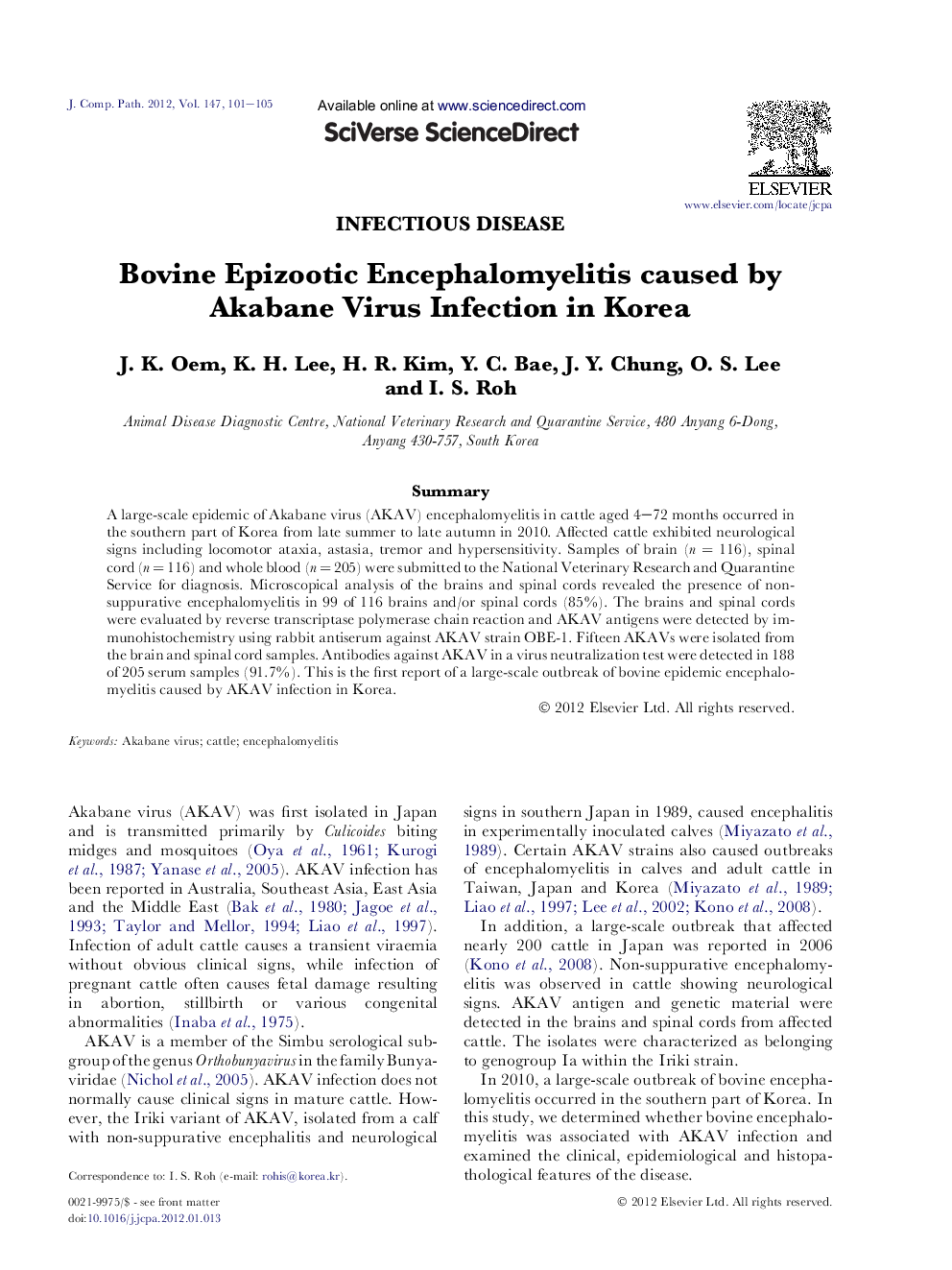| Article ID | Journal | Published Year | Pages | File Type |
|---|---|---|---|---|
| 8500753 | Journal of Comparative Pathology | 2012 | 5 Pages |
Abstract
A large-scale epidemic of Akabane virus (AKAV) encephalomyelitis in cattle aged 4-72 months occurred in the southern part of Korea from late summer to late autumn in 2010. Affected cattle exhibited neurological signs including locomotor ataxia, astasia, tremor and hypersensitivity. Samples of brain (n = 116), spinal cord (n = 116) and whole blood (n = 205) were submitted to the National Veterinary Research and Quarantine Service for diagnosis. Microscopical analysis of the brains and spinal cords revealed the presence of non-suppurative encephalomyelitis in 99 of 116 brains and/or spinal cords (85%). The brains and spinal cords were evaluated by reverse transcriptase polymerase chain reaction and AKAV antigens were detected by immunohistochemistry using rabbit antiserum against AKAV strain OBE-1. Fifteen AKAVs were isolated from the brain and spinal cord samples. Antibodies against AKAV in a virus neutralization test were detected in 188 of 205 serum samples (91.7%). This is the first report of a large-scale outbreak of bovine epidemic encephalomyelitis caused by AKAV infection in Korea.
Keywords
Related Topics
Life Sciences
Agricultural and Biological Sciences
Animal Science and Zoology
Authors
J.K. Oem, K.H. Lee, H.R. Kim, Y.C. Bae, J.Y. Chung, O.S. Lee, I.S. Roh,
